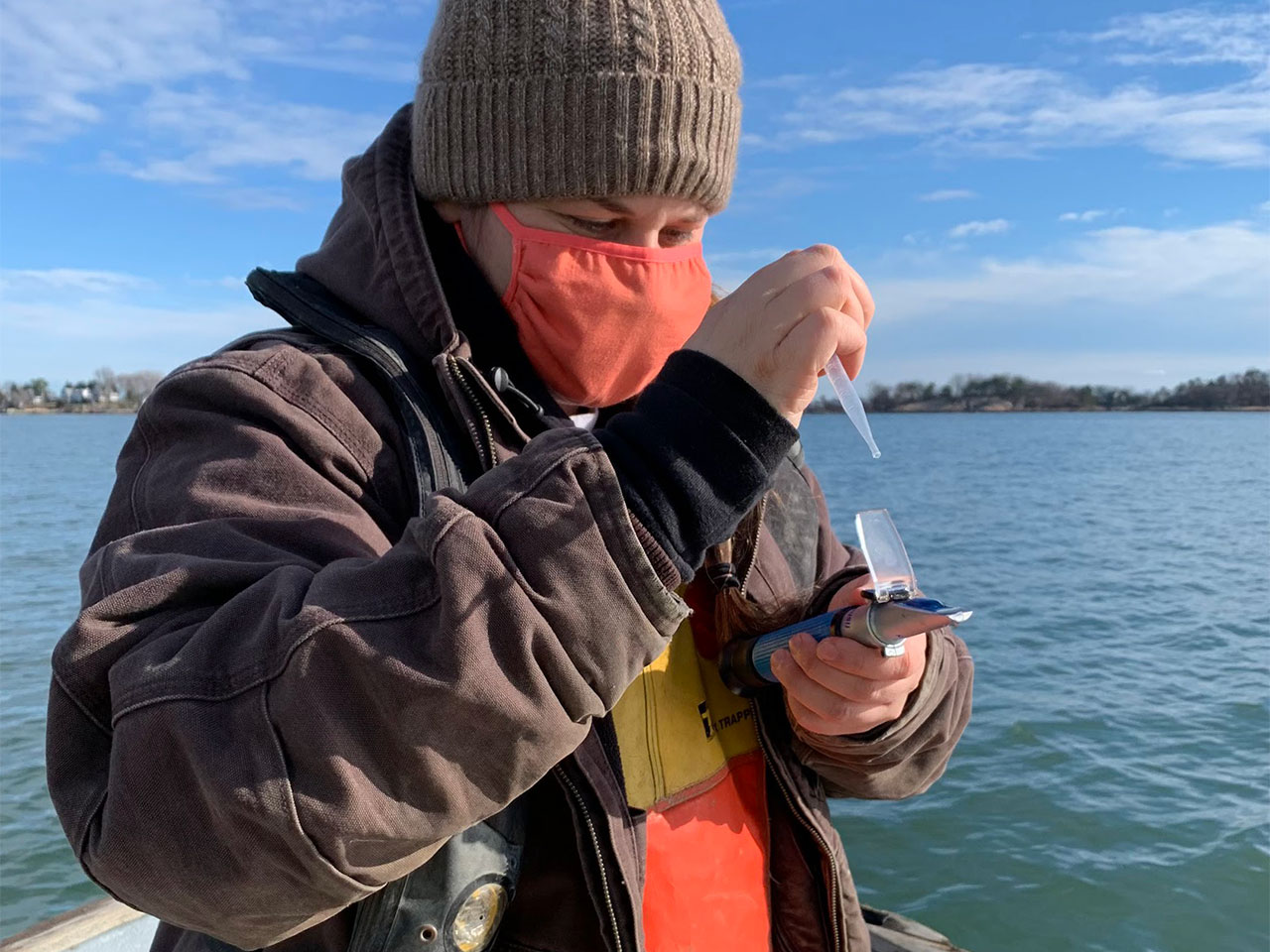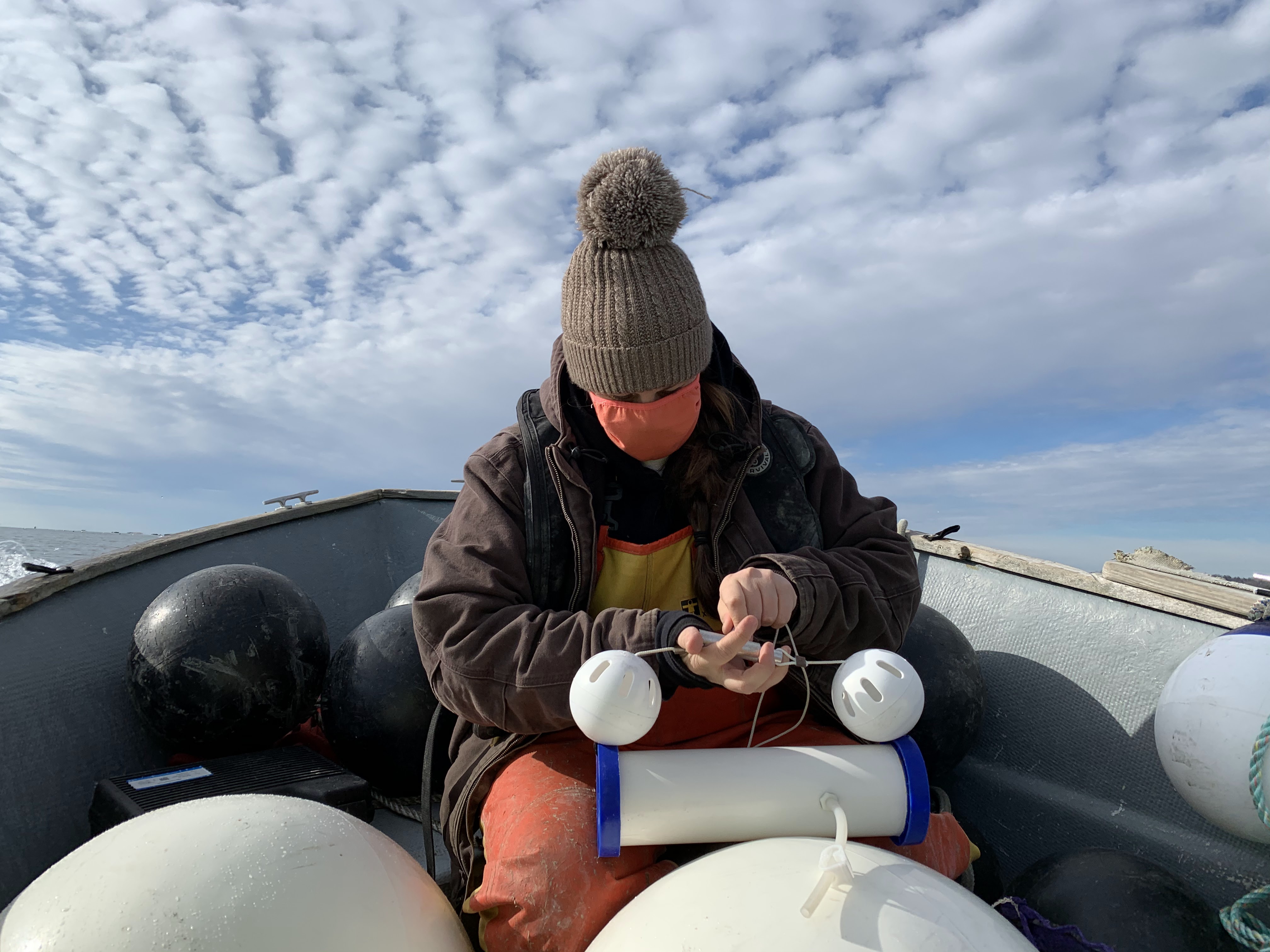Niskin bottles are expensive, so we use a makeshift alternative made with a piece of PVC tubing, two wiffle balls, and a spring-loaded release. The tube is lowered down into the water to the depth where kelp is grown, and the release triggers the balls to close the tube, capturing a water sample. The sample can then be pulled to the surface and tested.
Back to: Site Evaluation
You’ll want to measure the salinity of the water at your site. Kelp is a saltwater species; if there’s too much fresh water at your site it can stunt the growth of your crop. Salinity is measured in parts per thousand (ppt). Deep ocean salinity is usually around 35 ppt, and levels decrease as you near sources of fresh water and get closer to shore. We recommend that kelp farms have a minimum salinity of 26 ppt, with an ideal range of 28-32 ppt, at the depth where the kelp is grown.
An easy way to measure salinity is with an inexpensive salinity refractometer, commonly used at commercial aquariums and available online. You can easily read the salinity of the water by putting a few drops onto a slide and holding it up to the light. The reading will display the salinity in ppt.
Keep in mind, when collecting your sample, that some sites could have a freshwater lens at the top of the water column from snowmelt or glacial runoff. The water could be significantly more saline just a few feet below the surface. Because you ultimately want to know the salinity at the depth where your kelp will grow, you can use an at-depth water sampler, such as a Niskin bottle, to capture a water sample below the surface.

